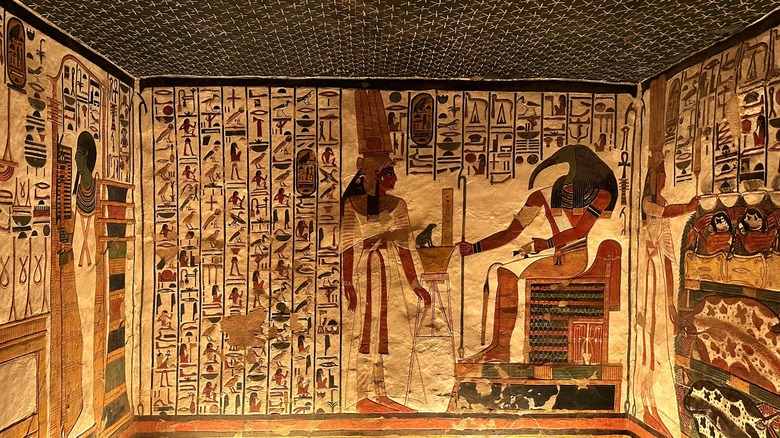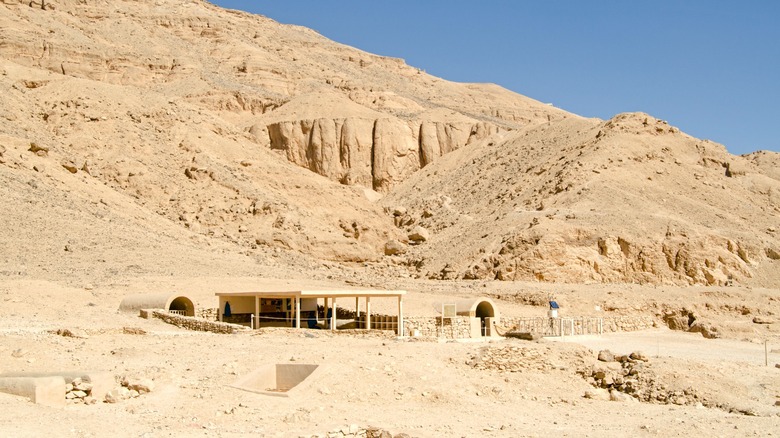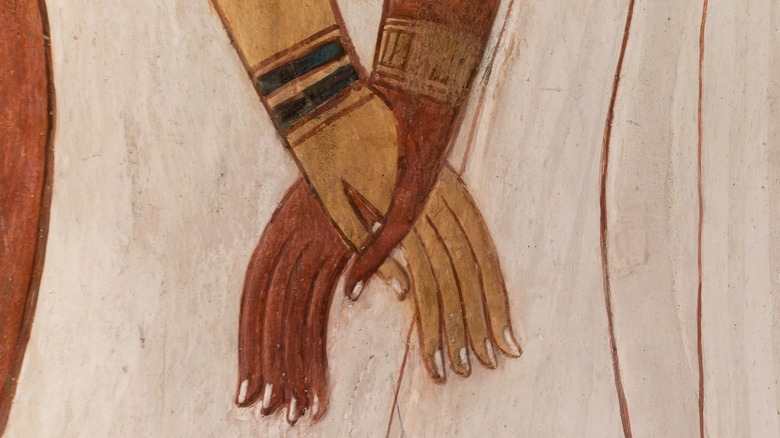Why You Can Only Spend 10 Minutes In One Of Egypt's Most Unique Tourist Destinations
Many travelers dream of visiting Egypt, eager to explore its gilded heritage and ancient wonders, like the Pyramids of Giza. Among these, the 3,200-year-old tomb of Queen Nefertari stands out as a unique treasure, often compared to the Sistine Chapel for its historical significance and breathtaking art. However, the opportunity to witness this marvel is limited to only 10 minutes.
This limitation goes beyond managing long queues. In fact, it's scientific and absolutely necessary. It started with archaeologist Ernesto Schiaparelli discovering the giant tomb in 1904. During the excavation, he realized that, like many other sites from ancient Egypt, Nefertari's tomb fell victim to looting, leading to a tragic loss of cultural valuables and the mummified body of the queen herself. However, the more pressing problem was the tomb's preservation, so Schiaparelli and his team got to work immediately. Regardless of their efforts, the tomb seemed to break down faster than they could repair it. This urgency prompted the Egyptian Antiquities Organization to uncover the reasoning behind this rapid deterioration.
The problem they found was due to the dissolving of inactive salt in the limestone and plaster from four sources of moisture: water in the coat from when it was originally created, recurring floods into the tomb, water absorption into the limestone, and water vapor (breath and sweat) from visitors. The moisture evaporates, causing the salt crystals between the paint and plaster to lose their bond with the limestone. As a result, large sheets of the art literally fall off.
Nefertari's tomb reopens to the public
Thankfully, after some 10,000 Japanese mulberry bark paper bandages, 7,000 images for archival photographic study, and decades of restoration and monitoring, the tomb was finally ready to be reopened to the public. Unlike any other tomb in the Valley of Queens, Nefertari's is the only one not covered in glass, which means visitors have the extraordinary opportunity to view this tomb in its ancient glory.
Queen Nefertari's tomb offers an unparalleled glimpse into the history and the personal aspects of one of its most famous queens. You enter by a steep set of stairs that lead you down into three chambers. This corridor also acts as a divider for the tomb, separating the antechamber and a decorative room. Along the way, beneath a frescoed golden-starred night sky ceiling, you get a glimpse of the Queen's life and her connection to deities. These dazzling depictions include Thoth (writing and wisdom), Isis (love, healing, fertility), and more, along with Nefertari's chosen passages from the Book of the Dead. You can even see a youthful Nefertari with tattoos juxtaposed with her older self on an opposite wall.
Evidently, Nefertari's tomb was made with great love. However, it bore an even greater sorrow for Pharaoh Ramses II, her husband, who professes this on the walls of her tomb: "My love is unique — no one can rival her, for she is the most beautiful woman alive. Just by passing, she has stolen away my heart."
Make the most of every moment
To enter the Tomb of Nefertari, an additional fee of 2,000 EGP or $42 is required, on top of the Valley of Queens ticket price of 360 EGP or $7.60. While this may seem expensive compared to other sites in Egypt, many visitors attest that the experience is worth the cost. With well-preserved paintings, a tranquil atmosphere, and just 10 minutes inside, it's essential to make the most of every moment. Planning your visit in advance is key, prioritizing what you want to see inside the tomb. You can find a map of the tomb here. Be present, and remember that photography isn't allowed, especially flash photography as it can damage the art. Most importantly, take some time to reflect afterward; it's proven to make memories last longer.
If you're well-versed in these mindful tips and wish to extend your stay, consider giving a baksheesh (a tip or, more accurately, a bribe). Although we do not recommend this, travelers have noted that you could spend longer in the tomb if you slip the tomb guardians some extra cash. By being truly present inside such a precious relic, we can respect human history and the conservation efforts that allow us such intimate encounters with the past. Unfortunately, as of March 2024, the tomb of Nefertari has been officially announced as closed to the public until further notice for urgent restoration. Until then, enjoy Nefertari's tomb in a VR experience on Steam and Viveport.


